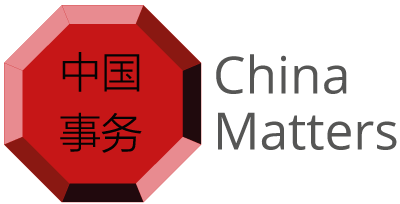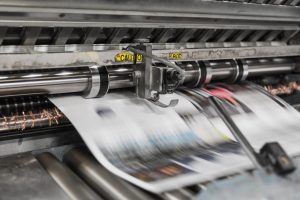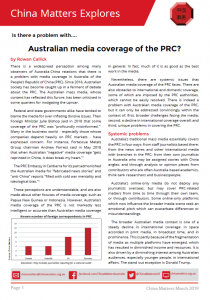Source: Unsplash
Is there a problem with…
Australian media coverage of the PRC?
By Rowan Callick
There is a widespread perception among many observers of Australia-China relations that there is a problem with media coverage in Australia of the People’s Republic of China (PRC). Since 2016, Australian society has become caught up in a ferment of debate about the PRC. The Australian mass media, whose content has reflected this furore, has been criticised in some quarters for instigating the uproar.
Federal and state governments alike have tended to blame the media for over-inflating divisive issues. Then Foreign Minister Julie Bishop said in 2018 that some coverage of the PRC was “profoundly misinformed.”1 Many in the business world – especially those whose companies depend heavily on PRC markets – have expressed concern. For instance, Fortescue Metals Group chairman Andrew Forrest said in May 2018 that when Australian “negative” media coverage “gets reprinted in China, it does break my heart.”2
The PRC Embassy in Canberra for its part admonished the Australian media for “fabricated news stories” and “anti-China” reports “filled with cold war mentality and ideological bias.”3
These perceptions are understandable, and are also made about other focuses of media coverage, such as Papua New Guinea or Indonesia. However, Australia’s media coverage of the PRC is not markedly less intelligent or accurate than Australian media coverage in general. In fact, much of it is as good as the best work in the media.
Nevertheless, there are systemic issues that Australian media coverage of the PRC faces. There are also obstacles to international and domestic coverage, some of which are imposed by the PRC authorities, which cannot be easily resolved. There is indeed a problem with Australian media coverage of the PRC, but it can only be addressed convincingly within the context of, first, broader challenges facing the media; second, a decline in international coverage overall; and third, unique problems in covering the PRC.
Systemic problems
Australia’s traditional mass media essentially covers the PRC in four ways: from staff journalists based there; from the news wires and other international media with branches in the PRC; from their own journalists in Australia who may be assigned stories with China angles; and through analysis or opinion pieces from contributors who are often Australia-based academics, think-tank researchers and businesspeople.
Australia’s online-only media do not deploy any journalists overseas, but may cover PRC-related matters from time to time through their own team, or through contributors. Some online-only platforms which now influence the broader media scene seek an emotional pitch which can exacerbate differences or misunderstandings.
The broader Australian media context is one of a steady decline in international coverage: in space accorded in print media, in broadcast time, and in prominence. This is partly because of the fragmentation of media as multiple platforms have emerged, which has resulted in diminished income and resources. It is also driven by a diminishing interest among Australian audiences, especially younger people, in international affairs. The stand-out exception is Donald Trump.
Consonant with the overall decline in international affairs coverage, the corps of foreign correspondents deployed by Australian media has shrunk rapidly, except within the Australian Broadcasting Corporation, to one or two posts. Until the 2000s, the Sydney Morning Herald/The Age, the Australian Financial Review and The Australian each had eight or so international placements.
In Beijing today, the ABC has two Australians. The other Australian media organisations in the PRC, each with a single assigned journalist, comprise The Australian, Nine/Fairfax and SBS based in Beijing, and the Australian Financial Review in Shanghai. Several other Australian journalists are working in the PRC, including with Reuters, the BBC, the Financial Times and The New York Times. Naturally, their work is distributed internationally, rather than targeted to Australia.
With the exception of Australian Financial Review, whose former China correspondent is now their Sydney-based Asia Pacific editor, The Australian, the Sydney Morning Herald and The Age used to employ Asia-Pacific editors in Australia. These more senior individuals had experience working and living in the region – including the PRC – which they applied to enhance their readers’ understanding of regional issues. But none remain with that responsibility. This is just one area in which editors and broadcast managers might give a higher allocation to coverage of the PRC if they were more Asia-savvy.
Moreover, the number of journalists with Chinese language ability is tiny. This is chiefly because few people whose main study has been the Chinese language choose next to acquire journalistic skills. Journalists themselves cannot, unless they have independent means, take out the time required to gain competence in Chinese.
The result has been a growing requirement by media to hang China stories on an Australian peg. Pieces are published and broadcast about the PRC as a place and a people of considerable interest per se. But they are not prioritised like Australia-angled material.
Obstacles to coverage of the PRC
Journalists in the PRC face a number of obstacles. The PRC’s own mass media – all of them ultimately responsive to direction from the Communist Party of China (CPC) – are expected to play their part in President Xi Jinping’s goal of national rejuvenation. When Xi toured the headquarters of the PRC’s major media organisations in 2016, he stated that they are “the propaganda fronts and must have the party as their family name.”4
For Australian and other foreign media covering the PRC directly, this underlines a triple set of problems. First, PRC officials mostly believe that other media around the world must, like their own media, be subject to political direction. Foreign media are presumed to pursue the interests of the state where they are based, meaning that their claims to “independence” must be feigned. It also can lead to confusion among PRC officials who believe that anything Australian journalists report comes at Canberra’s direction, which inevitably affects the country’s reputation as either “pro-” or “anti-China”.
Second, the PRC tends to conflate “China” and the Chinese people with the CPC and its interests. Criticism of a PRC government policy or action is dismissed as “anti-Chinese”, whereas criticism of Canberra or of an Australian politician is not perceived as “anti-Australian” by definition. Australians with links to the PRC especially resent being labelled “anti-Chinese” for venturing a criticism of Beijing’s repression in western Xinjiang, or else “pro-Chinese” for supporting a PRC business’s investment in Australia.
Third, the PRC’s officials are not accountable to media. For foreign journalists, operating in the PRC thus provides considerable challenges: only a fortnight’s parliamentary session (the National People’s Congress) every year, with access limited; very rare access to courts; few press conferences; no phone interviews with senior CPC, government or state-owned company officials; and a heavily censored internet, with restricted access to many international sites. Foreign journalists are subjected to enhanced surveillance and, at times, intimidation. An increasing number of academics and other analysts do not wish to be quoted directly, even on uncontroversial topics, or to be filmed. Within Australia, some individuals of PRC background – even if now Australian citizens – are reluctant to talk publicly out of concern for potential repercussions for themselves, family or friends back in the PRC. Senior PRC officials who visit Australia are rarely available for interview.
Information gaps filled by opinion
The inevitable resulting gaps are sometimes filled for journalists by well-informed analysts, sometimes by the opinions of people with a special interest. Limited access to decision-makers who are crucial in explaining a one-party state provides scope for mischief-making by those who may wish to promote a case either “for” or “against” the PRC, since their assertions cannot be – or are very unlikely to be – proven or disproven.
Sometimes that gap is filled by direct citation of the most inflammatory opinions of PRC media, usually found in Global Times, whose staff are in part rewarded according to Internet clicks, and whose comments are thus designed to trigger strong reactions.
Usually, Australian media seeking to report in a country where they have no correspondent send journalists on short-term assignments. That is not possible in the PRC because journalist visas are only attainable through the sponsorship of a Party or state agency.
A significant section of Australia’s Chinese-language media is in effect controlled, though not technically owned, by organisations supportive of the PRC’s official position, or else choose to avoid direct criticism of the PRC. For instance, Austar International Media Group, which owns eight newspapers and several radio stations around Australia, sources much of its content from China Radio International, an affiliate of the PRC Central Propaganda Department. But some media such as Vision Times do persist in independent and critical coverage of the PRC.
Australia’s interest in the PRC is rising, along with mutual benefits and opportunities. But as Beijing’s ambitions rise, so do the costs of engagement. Broadly speaking, strategically focused media coverage of the PRC has been dubbed “negative” and economically focused coverage “positive”. This reflects the often over-simplified positions adopted in Australia.
The debate about PRC government interference in Australia – which peaked before the bipartisan passing of legislation in 2018 – led to many stories that sought to explain Canberra’s questions, but lacked the lively interchange within the Chinese- Australian communities that had marked, for instance, the coverage within Australia’s Muslim communities of Islamism. The media either lacked the capacity or desire to engage such Chinese communities – or many in those communities were too nervous to speak out identifiably. This confined the debate chiefly to familiar “pro-China” or “anti-China” voices, and contributed to a lack of nuance.
Questions about media sensationalism, or about verifiable mistakes, are cause for understandable concern. These need to be addressed story by story. But a case has not been convincingly made that they are especially or uniquely common in PRC-related coverage. It is difficult to locate journalists or editors whose PRC coverage is, as sometimes claimed, driven by ideology.
There is no single solution to the complex challenges posed for reporting on the PRC effectively. One positive recent trend is the broadening of China coverage in Australian mass media beyond economy and human rights issues, crucial though these are, into the arts, entertainment, sports and other human interest stories.
The information and culture gap, underpinned by the institutional disconnect between the countries, is unlikely to be bridged convincingly any time soon. Though current trends are mostly negative, initiatives can be taken that will, if pursued persistently, start to complement the burgeoning people-to-people links and improve mutual understanding.
What does this mean for Australia?
Recommendations
- The Australia-China Council should set up a sidefund for scholarships for mid-career Australian journalists to spend two years studying Mandarin full-time, either in Australia or in the PRC.
- The Australian Embassy in Beijing should organise programmes for leading Australian media executives – editors and broadcast managers – to visit the PRC.
- Negotiations should be started with the All-China Journalists Association so that it can issue invitations to Australian journalists who wish to make short-term reporting visits to the PRC, through a correspondence arrangement with Australia’s Media, Entertainment and Arts Alliance.
- The appropriate regulatory bodies should review the beneficial ownership of Chinese language media in Australia to determine whether they breach monopoly concerns. Canberra should consider funding a discrete public-service Chinese-language media organisation for Chinese-speaking Australian residents, which might incorporate those responsible for ABC and SBS Chinese language content.
- When inviting senior CPC or PRC government visitors to Australia, the Department of Foreign Affairs and Trade (DFAT) should encourage the PRC Ministry of Foreign Affairs to stipulate that they be available for interview by Australian media.
- DFAT should discuss with the PRC Embassy in Canberra ways to encourage senior executives from PRC state-owned enterprises with prominent investments in Australia to agree to be interviewed in the PRC.
- Federal and state governments should make clear to ethnic Chinese associations in Australia, as well as to companies, groups and individuals, their right to freedom of speech and association, and should vow publicly to bring up with PRC Embassy officials instances of negative repercussions for speaking to media.
Author
Author and columnist Rowan Callick has three times worked as a China Correspondent, once for the Australian Financial Review based in Hong Kong and twice for The Australian based in Beijing, completing his last posting in April 2018. He has written three books on contemporary Chinese subjects, published in both English and Chinese. He has won two Walkley Awards for coverage of China, and the Graham Perkin Award for Australian Journalist of the Year.
China Matters does not have an institutional view; the views expressed here are the author’s.
This policy brief is published in the interests of advancing a mature discussion of Australian media coverage of the PRC. Our goal is to influence government and relevant business, educational and non-governmental sectors on this and other critical policy issues.
China Matters and the author are grateful for comments from the four reviewers who received the draft text anonymously.. We welcome alternative views and recommendations, and will publish them on our website. Please send them to [email protected].
Notes
- ‘Doorstop interview with Andrew Forrest AO, FMG Cloudbreak mine’, Transcripts of the Minister for Foreign Affairs, 15 May 2018. https://foreignminister.gov.au/transcripts/Pages/2018/jb_tr_180515.aspx?w=tb1CaGpkPX%2FlS0K%2Bg9ZKEg%3D%3D
- Ibid.
- ‘Remarks of Spokesperson of Chinese Embassy in Australia’, Embassy of the People’s Republic of China in the Commonwealth of Australia, 6 December 2017. http://au.chineseembassy.org/eng/sghdxwfb_1/t1516965.htm
- Associated Press, ‘Xi Jinping asks for “absolute loyalty” from Chinese state media’, The Guardian, 20 February 2016. https://www.theguardian.com/world/2016/feb/19/xi-jinping-tours-chinas-top-state-media-outlets-to-boost-loyalty
Feedback on China Matters policy brief on Australian media coverage of the PRC:


